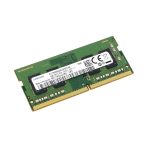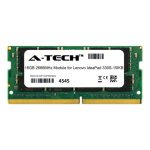Understanding 1867 MHz DDR3 Memory Modules
Understanding the specifications of the 1867 MHz DDR3 memory module is key to optimizing your PC’s performance. This type of RAM, often referred to as DDR3-1867, denotes the speed at which the memory operates. DDR3 stands for third generation Double Data Rate Synchronous Dynamic Random-Access Memory, and the 1867 MHz indicates its maximum clock speed.

Here’s what you need to know about 1867 MHz DDR3 modules:
- Speed: 1867 MHz DDR3 is faster than the standard 1333 MHz and 1600 MHz DDR3 modules. The higher frequency enables quicker data transfer between the memory and the CPU.
- Compatibility: Before upgrading, ensure that your motherboard supports the 1867 MHz speed. Not all motherboards can handle this increased frequency.
- Latency: Alongside speed, these modules also have specific latencies that affect performance. Lower latency means quicker response times.
- Voltage: 1867 MHz DDR3 memory modules typically require a higher voltage than lower-speed DDR3 RAM. Make sure your PC’s power supply can cater to this requirement.
When considering an upgrade to 1867 MHz DDR3 memory, assess your system’s current capabilities and the types of tasks you perform. Gaming, video editing, and other intensive applications benefit greatly from this upgrade. While not the latest generation of RAM, for compatible systems, upgrading to an 1867 MHz DDR3 memory module can provide a significant boost in speed, enhancing the overall user experience.
Benefits of Upgrading to 1867 MHz DDR3 RAM
Upgrading your PC’s memory to an 1867 MHz DDR3 RAM module can offer numerous benefits. The primary advantage is a noticeable improvement in the system’s overall speed. Faster memory supports quicker data processing, which allows programs to run more efficiently. When you work with large files or run memory-intensive applications, the additional speed can reduce load and save times significantly. For gamers, this upgrade translates into smoother gameplay and faster frame rates, especially in scenarios where the GPU is not the bottleneck.
Another benefit is improved system multitasking. With more bandwidth, your computer can handle multiple operations with less strain. This is crucial for users who often have several programs open at once or who stream content while gaming or working. Additionally, the boosted speed can have a positive impact on the system’s responsiveness, making everyday tasks more swift and enjoyable. Although an upgrade requires an investment, the cost-to-benefit ratio is usually favorable for users who need the extra performance.
To truly reap these benefits, ensure that your system is compatible with the 1867 MHz speed. Not only will this prevent hardware conflicts, but it also verifies that you can take full advantage of the faster speeds offered by the 1867 MHz DDR3 memory modules. Remember, an upgrade like this can extend the useful life of your computer, delaying the need for a complete system overhaul.
Steps to Install 1867 MHz DDR3 Memory in Your PC
Installing 1867 MHz DDR3 memory modules in your PC involves several critical steps. Here’s a straightforward guide to help you upgrade smoothly and successfully.
- Check Compatibility: First, ensure that your motherboard supports 1867 MHz DDR3 memory. Consult your motherboard’s manual or manufacturer’s website for confirmation.
- Purchase Compatible Memory: Buy a 1867 MHz DDR3 memory module from a reliable vendor. Ensure it matches your system’s specifications.
- Turn Off Your PC: Before installing, shut down your computer. Disconnect it from the power source for safety.
- Open the PC Case: Remove the side panel of your computer case. This step varies by case design. Refer to your case manual for specific instructions.
- Ground Yourself: To avoid static damage to the memory, ground yourself. Use an anti-static wrist strap or touch a grounded metal object.
- Install the Memory: Locate the memory slot on your motherboard. Align the notch in the 1867 MHz DDR3 memory module with the key in the slot. Gently press the module down until the side clips snap into place.
- Close the Case and Reconnect Power: After installing the memory, replace the side panel. Reconnect your PC to the power source.
- Turn On Your PC: Power on your computer. Check if the system recognizes the new memory. Press the ‘pause’ key during boot to enter BIOS if necessary. Check under hardware information.
- Verify System Operation: Ensure that your system boots up and operates normally. Open a few applications to ensure the RAM is functioning as expected.
By following these steps, your upgrade to a 1867 MHz DDR3 memory should go smoothly, improving your PC’s performance significantly.
Configuring BIOS Settings for 1867 MHz DDR3 Memory
After installing your new 1867 MHz DDR3 memory module, configuring your system’s BIOS is essential. This step ensures that the memory runs at the correct speed and operates smoothly. Here’s how to configure your BIOS settings for 1867 MHz DDR3 RAM:
- Enter the BIOS: Restart your PC and press the designated key to enter the BIOS menu. This is often the ‘Delete’, ‘F2’, or ‘F10’ key.
- Locate Memory Settings: Search for the ‘Memory’ or ‘RAM’ settings in the BIOS menu. It’s under sections like ‘Advanced’, ‘AI Tweaker’, or ‘Overclocking’.
- Adjust RAM Speed: Find the option for ‘Memory Frequency’ or similar. Set it to 1867 MHz, matching your DDR3 memory module’s specs.
- Set Timings: Configure the memory timings as per your RAM’s specification sheet. These include CAS latency and other delay timings.
- Adjust Voltage: If needed, set the correct voltage for your memory. This must match the voltage requirement for the 1867 MHz DDR3 RAM.
- Save Changes: After configuring, save the changes. Exit the BIOS, ensuring you select ‘Save and Exit’.
- Reboot and Test: Your PC will reboot. Check whether the system recognizes the new configuration and operates normally.
Consult your motherboard’s manual if in doubt during configuration, as the steps may vary. Properly setting up the BIOS for your 1867 MHz DDR3 memory ensures you get the best performance without stability issues.

Comparing 1867 MHz DDR3 Memory with Other RAM Speeds
When looking to optimize your PC, it’s useful to compare the 1867 MHz DDR3 memory module with other RAM speeds. Let’s break down how it stands against common alternatives:
- Standard Speeds: Most DDR3 RAM comes in 1333 MHz or 1600 MHz speeds. The 1867 MHz DDR3 is faster, offering better data transfer rates.
- Performance Gain: Compared to the standard speeds, 1867 MHz modules can give a smoother experience during resource-heavy tasks.
- Cost Comparison: While 1867 MHz DDR3 modules may cost more, the performance boost could be worth the investment for power users.
- Compatibility: Remember, not all systems will benefit from the higher speed if they’re not compatible.
- DDR4 Comparison: There’s also DDR4 memory, which starts at 2133 MHz. Yet, 1867 MHz DDR3 could be more suitable for older systems that don’t support DDR4.
Weigh these factors when deciding whether or not to upgrade your memory. The right pick depends on system compatibility, the tasks you perform, and your budget. For PCs that support it, 1867 MHz DDR3 memory can be a cost-effective way to extend their lifespan and improve performance.
Troubleshooting Common Issues with DDR3 Memory Installation
Installing 1867 MHz DDR3 memory modules could pose certain challenges. Here’s how to address some common issues:
- System Does Not Recognize New Memory: Make sure the memory module is properly seated in the slot. Press down firmly until the clips lock.
- PC Fails to Boot: Check if the memory module’s speed aligns with your motherboard’s specifications. Unsupported speeds can prevent booting.
- Blue Screens or System Crashes: This could be due to incorrect BIOS settings. Adjust your memory’s frequency and voltage according to the module’s requirements.
- Reduced Performance: Ensure that all installed memory modules have the same speed and size. Mismatch can lead to performance issues.
- Physical Installation Issues: Sometimes, dust or debris in the slot can cause contact problems. Clean the slot gently with compressed air before installation.
Follow these steps to troubleshoot effectively. If problems persist, consult your motherboard’s manual or seek professional help.
Best Practices for Maintaining DDR3 Memory Health
Maintaining the health of your 1867 MHz DDR3 memory module is crucial for long-term performance. Here are some best practices:
- Keep Your PC Clean: Accumulated dust can cause overheating. Regularly clean your PC to prevent this.
- Ensure Proper Ventilation: Good airflow helps keep memory modules cool. Check that fans and vents are unobstructed.
- Update Your BIOS: Manufacturers often release updates that improve stability. Keep your BIOS up to date.
- Use Surge Protectors: Power surges can damage RAM. Connect your PC to a surge protector.
- Avoid Electrostatic Discharge (ESD): Handle memory modules with care. Use anti-static wrist straps when upgrading.
- Monitor Temperatures: High temperatures can degrade memory performance. Use software to check for overheating issues.
- Regular Memory Testing: Run memory diagnostic tools occasionally. They help detect and fix errors early.
By following these practices, you can help ensure that your 1867 MHz DDR3 memory module remains in good condition, contributing to the optimal performance and longevity of your PC.

Expert Tips to Maximize Performance with 1867 MHz DDR3 RAM
To maximize performance with your 1867 MHz DDR3 memory module, follow these expert tips:
- Optimize Memory Allocation: Use operating system settings to allocate memory wisely. This ensures optimal use of the 1867 MHz DDR3 RAM.
- Enable XMP Profiles: If supported, enable XMP (Extreme Memory Profile) in BIOS. This boosts your RAM’s performance to its advertised speed.
- Regularly Update Drivers: Keep your system’s drivers updated. Updated drivers help maintain compatibility and performance of the 1867 MHz DDR3 memory.
- Adjust Graphics Settings: Lowering graphics settings in resource-heavy applications can lessen the load on your RAM. This helps maintain a steady performance.
- Close Background Applications: Close unnecessary background applications. More available memory increases the efficiency of your active programs.
- Defragment Your Disk Regularly: While not directly related to RAM, defragmenting your hard drive can speed up file access and reduce the load on your 1867 MHz DDR3 RAM.
By following these simple yet effective tips, you can ensure that your PC runs smoothly and maximizes the capabilities of the 1867 MHz DDR3 memory module.

